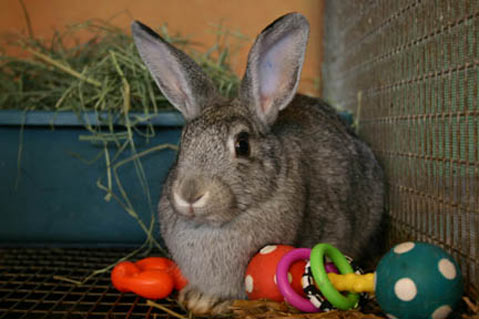Preyed on Pets
Don’t Let Your Pet Become a Coyote Statistic
Last week in a New York City suburb, a three-year-old girl was playing in her backyard when a coyote from the woods nearby jumped on top of her, biting her neck and torso. The parents chased off the animal before it could do more damage. This comes on the wake of another attack where a six-year-old was mauled by two coyotes and suffered bites and scratches on her thigh, shoulder, neck, ear, and back. Attacks on humans by coyotes are unusual; news media reported only 142 coyote attacks on people in the U.S. and Canada between 1960 and 2006, according to a study published last year by Ohio State University researchers. However, coyote attacks on pets are quite common.
Coyotes have a natural source of prey in rabbits, birds, and rodents, but they also have an abundant supply of food such as garbage and pet food. Another source—your pets. Small dogs and cats can become victims even in broad daylight. According to Kevin Brennan, a wildlife biologist with the California State Fish and Game Department, “Coyote sightings in Southern California’s hillside neighborhoods have become commonplace, as the animals are drawn by the promise of an easy meal.”
Renee Merrill, from Thousand Oaks, California, is on a mission to warn pet owners about coyote attacks after her Pomeranian was killed last year. Merrill posts warning signs in her neighborhood and stockpiles articles about coyote behavior, coyote trapping methods, and anti-coyote fencing, forwarding them to people who ask for help. She plans to form a watch program and wage her campaign throughout her neighborhood.
According to Animal Shelter Assistance Program (ASAP), even if you don’t hear them at night or see them at dusk or dawn, coyotes are still out there stalking cats. ASAP cautions cat owners that although coyotes are most active at night, they are often seen during the day, and especially in the summer when they are feeding pups. Lisa Krause from ASAP says: “Everyone who owns a pet in Santa Barbara should be aware of coyotes and their threat to our pets. Coyotes use the creeks as corridors to all neighborhoods of Santa Barbara and Montecito. If you think your pet is too smart for a coyote, you are wrong because they travel in packs. Please keep your pets safe and keep them indoors from dusk to dawn.”
For those who feel they must let their cats outside and can’t bring them in at night, a product called “the coyote roller” might be a good option. This product is supposed to keep predators out of your yard, but also keeps pets safe in the yard (without looking too unsightly). These rollers are placed on top of a fence to make it difficult for an animal to get a foothold to pull itself over the top. The roller rotates with as little as two ounces of pressure and withstands 250 pounds of weight. According to the manufacturer, a coyote can go over a six-foot high fence and be in your yard in just over one second. The Coyote Roller interferes with the coyote’s jump, by making it virtually impossible for the animal to grab the top of the fence. Denied traction, the coyote loses its footing. And combined with the forward momentum, ends up banging into the fence and falling down. For more information on the coyote roller, check out coyoteroller.com/home.
The California Department of Fish and Game’s “Keep Me Wild” campaign suggests the following coyote precautions: (1) Never feed or attempt to tame coyotes. The result may be deadly conflicts with pets or livestock, or serious injuries to small children. (2) Do not leave small children or pets outside unattended. (3) Install motion-sensitive lighting around the house. (4) Trim ground-level shrubbery to reduce hiding places. (5) Be aware that coyotes are more active in the spring, when feeding and protecting their young.
Following these tips could help prevent coyotes from roaming in your backyard.

Adoptable Pet of the Week
Krista is one of 24 rabbits left at BUNS during the Jesusita Fire. She is a bright spirit, loves toys, and enjoys playing with her brother and sisters—Oprah, May, Lotte, Emma, and Nick. She would like to go home with one of her family, but would also make a good companion to your rabbit. Krista is an agouti—she has three colors on one hair!
Bunnies Urgently Needing Shelter (BUNS) is a volunteer organization which cares for abandoned rabbits. BUNS is located at the Santa Barbara County Animal Shelter, 5473 Overpass Road. BUNS works to find bunnies permanent homes, and educates the public on caring for a companion rabbit. For more information, visit bunssb.org
Mark your calendars! The Bunny Festival is September 26 at the Courthouse Sunken Gardens, from noon to 4 p.m. More information will be given closer to the date.



